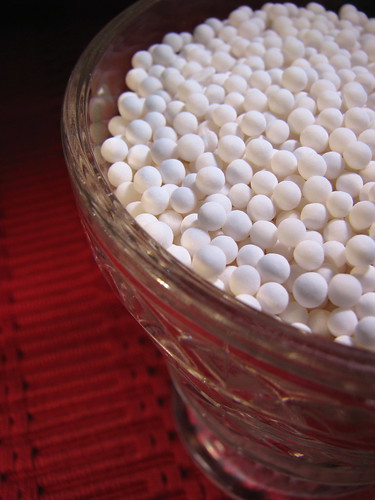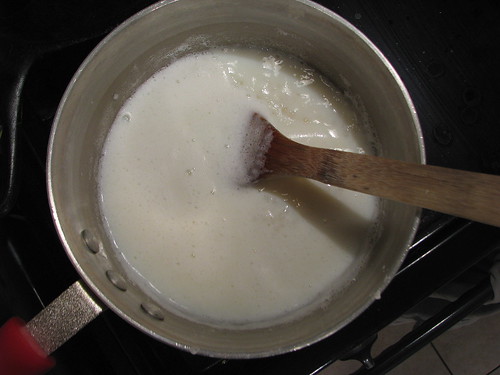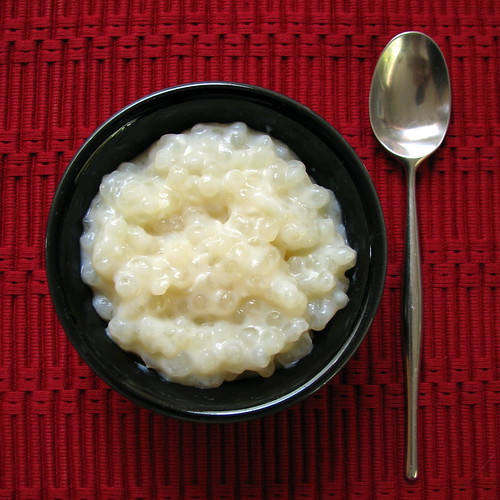Hunt item #5: cassava
cas⋅sa⋅va [kuh-sah-vuh] n. In both senses also called manioc, yuca.
1. A shrubby tropical American plant (Manihot esculenta) widely grown for its large, tuberous, starchy roots.

Hmm. Not that interesting. But wait...
2. The root of this plant, eaten as a staple food in the tropics only after leaching and drying to remove cyanide. Cassava starch is also the source of tapioca.
Bingo.
I remember eating tapioca as a kid, but not so much as an adult. No particular reason, except maybe because my ex used to fish a lot and would cure his own fish roe for bait. It always sort of reminded me of red tapioca.
So I bought a box and considered my options.

Not bad. I bought new place mats a few weeks ago and realized with this project that they’ll come in handy more for photo ops than anything else.
Yesterday I decided to actually make a batch of tapioca. In my effort to eat somewhat healthy, I used egg whites instead whole eggs, skim milk instead of whole milk, and Splenda instead of sugar. (And lots of vanilla.)

It seemed to take longer to thicken than the 20 minutes indicated on the box, but eventually I took it off the burner and set it out to cool. A few hours later after I got off work, I enjoyed a nice bowl of tapioca. With my favorite spoon.

(But see what I mean about its resemblance to roe?)
Hunt item #8: bun in the oven. Stay tuned.
No comments:
Post a Comment